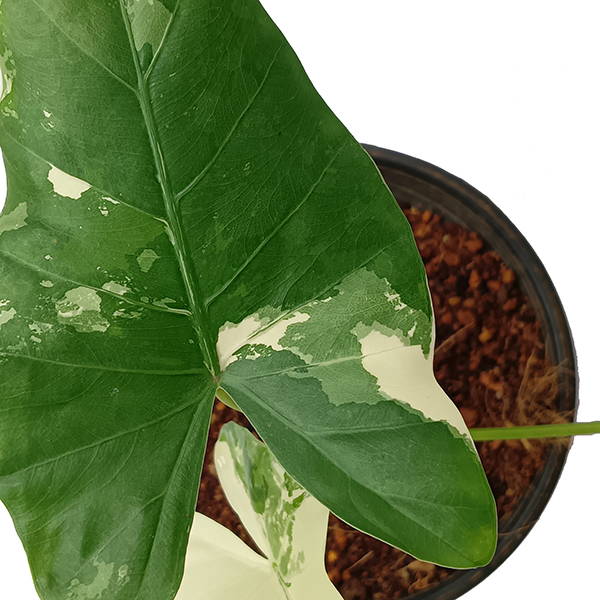
Common Name: Bromeliad
Botanical Name: Neoregelia, Guzmania Species
Bromeliads are as easy to care for as houseplants can get. These low maintenance indoor plants are mostly native to the tropics and subtropics of the Americas. They definitely prefer high temperatures and humidity, but they are also very adaptable and can thrive in most home environments.Adding a bromeliad to your space is a great way to bring in a tropical feel along with lots of color and texture. The trademark of bromeliad plants is their long, sword-shaped leaves that grow in a dazzling array of colors. New leaves develop in the center of the plant in a rosette formation and grow out. The wide leaves can feature patches of intensely saturated colors or patterns. The brilliant hues of the guzmania varieties are centerpiece worthy. While the striped and colorful leaves of the neoregelia varieties are at times, more subdued but still command attention. Bromeliads flower once during their lifetime, and they generally decline a few months after they begin to flower. However, after the plant flowers, it will focus its energy on propagating new plants.
Light
Bromeliads can flourish in low, medium, or bright light, just as long as it is indirect. These indoor plants are known for their stunningly colorful leaves, so increase the amount of indirect sunlight to draw out the intensity of the colors. Cut back on the amount of light your bromeliad receives for a more subdued look.
Water
Water when the soil is dry. Bromeliads grow around a central cup. In nature, this cup works like a reservoir that collects rainwater that is then absorbed into the plant. When growing a bromeliad as a houseplant, it can be watered through the cup and never directly into the soil as this may cause root-rot.If watering a bromeliad through the cup make sure to fill it no more than halfway. Do not leave the cup full for extended periods of time as this can promote rot. It is important to routinely rinse and flush the cup to remove any buildup of salts or minerals from the water.
Soil
Terrestrial bromeliads love loose, nutrient-rich potting soil. Use a soil medium that can retain moisture but also allows for draining excess water to avoid root rot. Most pre-mixed soils will suffice. Make sure that there is plenty of organic matter, like coco-coir, peat moss, or shredded leaves, and avoid soils that contain moisture retaining crystals. If your soil drains too quickly, we recommend re-potting your bromelaid into a compost-rich soil mixture, with less drainage materials. Bromeliads that are epiphytic, use an orchid potting mixture combined with bagged potting soil to increase the drainage as these types of bromeilads cannot have their roots in contact with water for extended periods of time. Learn how to create your own universal soil mixture for all of your indoor plants!
Temperature
As a tropical plant, Bromeliads prefer warmer temperatures, although they are tolerant and can handle most home environments. The ideal temperature for a bromeliad is 55-80°F.
Humidity
Bromeliads naturally grow in the tropics and subtropics, so they like higher humidity. These plants are adaptable and can do very well in average humidity. Keep in mind that as interior temperature rise these indoor plants will need more humidity. You can increase the humidity for your bromelaids by using a tray filled with pebbles and water or a cool mist humidifier! Learn how to increase the humidity in the air around your indoor plants!
Fertilizer
During the growing season, fertilize with ½-strength complete liquid fertilizer or use a slow-release fertilizer in the spring.
Pro Tips
Towards the end of their lifecycle bromeliad plants send up a flower spike, but it’s the colorful bracts or leaves that surround the flower spike that is the attention grabber. The flowers will typically last for several months.
Bromeliads propagate by sending out pups or offsets. The small plants can be removed from the parent plant when they have a few roots and be planted on their own.
In nature, bromeliad plants are epiphytic which means they latch on to trees, other plants, and even rocks and they pull all of the moisture and nutrients they need from the air. For this reason, bromeliads can be grown mounted to a board.





